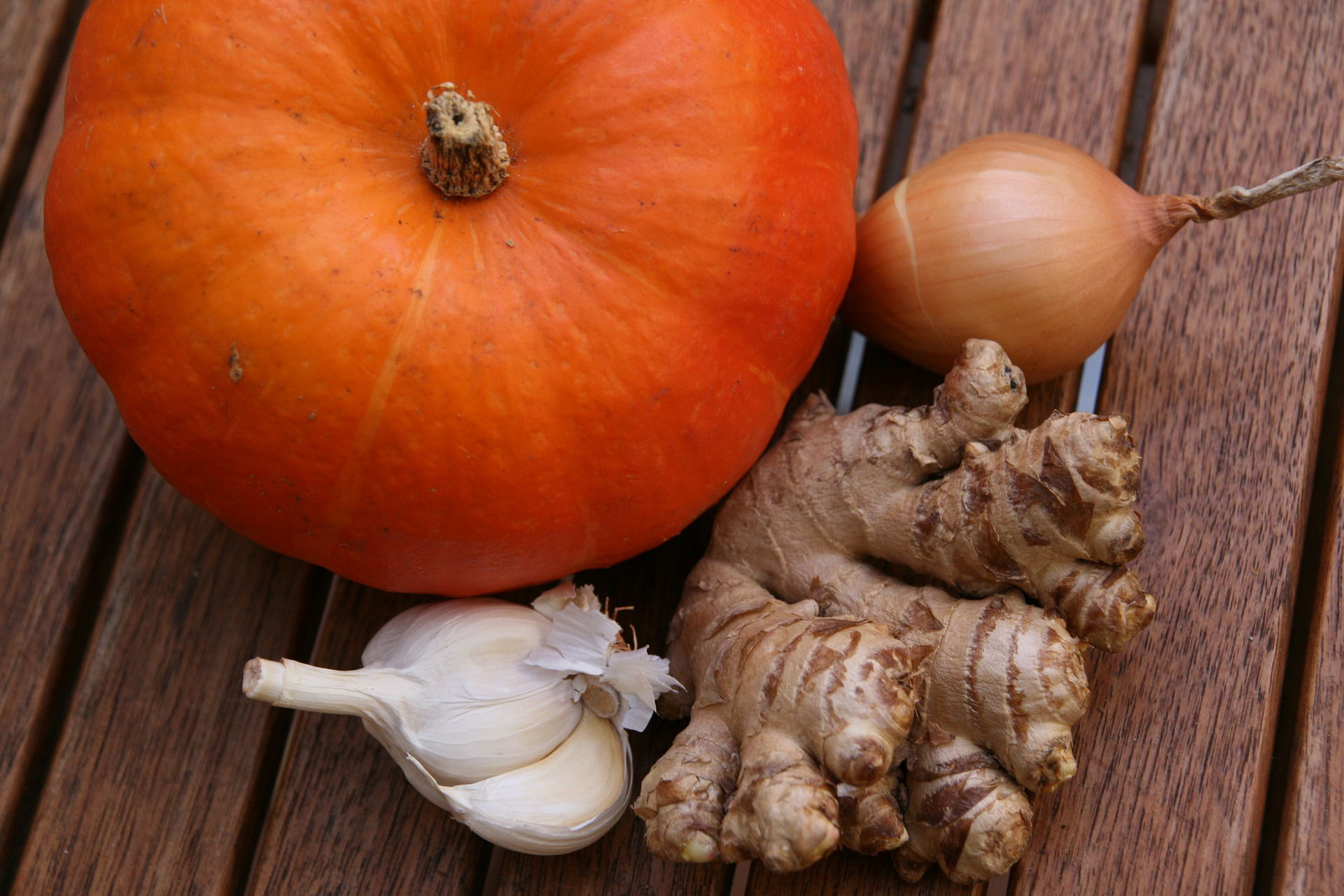Ginger roots are the underground rhizomes of the ginger plant, scientifically known as Zingiber officinale.
Ginger roots, also known as Zingiber officinale, have been valued for their medicinal and culinary properties for thousands of years. These knobby rhizomes belong to the Zingiberaceae family, which includes cardamom and turmeric and are native to Southeast Asia.
Ginger roots have a unique flavor and aroma that have made them a staple in many cuisines around the world. But the uses of ginger roots extend far beyond the kitchen. They have been used for their health benefits and in traditional medicine for centuries. In this article, we delve into the fascinating history, cultivation, uses, and future of ginger roots.

1. Introduction to Ginger Roots
What are Ginger Roots?
- Ginger roots are the underground rhizomes of the ginger plant, scientifically known as Zingiber officinale. These roots are used in cooking, medicine, and various products due to their distinctive aroma and flavor.
How do they grow?
Ginger roots grow horizontally beneath the soil surface and produce stems above ground that can grow up to three feet tall. The plant requires warm and humid weather conditions to grow and thrives best in well-drained soil with sufficient moisture.
What are the different types of Ginger Roots?
There are several types of ginger roots, including yellow ginger, white ginger, and blue-ring ginger. Yellow ginger is the most common and widely used for cooking and medicinal purposes. White ginger has a milder flavor and is often used in desserts, while blue-ring ginger is mainly used for ornamental purposes.

2. Historical Significance of Ginger Roots
Ginger Roots in Ancient Times
Ginger roots have been used for over 5000 years in ancient Chinese, Indian, and Middle Eastern cultures for medicinal and culinary purposes. The ancient Greeks and Romans also valued ginger roots for their medicinal properties and used them extensively in their food.
Ginger Roots in Medieval Times
During the medieval period, ginger roots were costly and considered a luxury item imported from Asia. It was used to flavor food, preserve meats, and as a remedy for the plague.
Ginger Roots in Modern Times
Today, ginger roots are widely available and used throughout the world in cooking, beverages, and medicine. Ginger is also used in skin care products and as an ingredient in essential oils due to its therapeutic properties.

3. Botanical Characteristics of Ginger Roots
Ginger Plant Physiology
Ginger plants belong to the Zingiberaceae family and can grow up to four feet tall. The plant produces thick stems that bear lily-like flowers and underground rhizomes that are ginger roots.
Genetic Varieties of Ginger
There are several genetic varieties of ginger, including Chinese ginger, Indian ginger, Australian ginger, and African ginger. Each variety has its unique flavor, aroma, and appearance.
Ginger Plant Morphology
Ginger plants have long, narrow leaves and thick, fleshy roots that store nutrients for the plant. The roots have a pale yellow or beige flesh covered by brown skin that is often peeled before use.

4. Cultivation and Harvesting of Ginger Roots
Growing Conditions for Ginger Plants
Ginger plants require warm and humid weather conditions to grow, with temperatures ranging from 20-30°C. The plant grows best in well-drained soil, rich in organic matter, and with sufficient moisture.
Planting and Propagating Ginger
Ginger roots are planted in early spring or early fall by burying small pieces of rhizomes in shallow trenches. The roots should be planted with their buds facing up and covered with soil. The plants are propagated by separating the rhizomes from the plant and replanting them.
Harvesting and Post-Harvest Processing of Ginger
Ginger roots are harvested when the plant has reached maturity, which is usually after 8-10 months of growth. The roots are dug up, cleaned, and dried in the sun or using a dehydrator. The roots can also be processed into various products, including pickled ginger, ginger paste, and ginger oil.

5. Medicinal and Culinary Uses of Ginger Roots
Ginger roots have been used for both medicinal and culinary purposes for centuries. With its wide range of health benefits, ginger has been praised as a natural remedy for nausea, inflammation, and digestive issues. Additionally, ginger is a staple in many culinary recipes, especially in Asian cuisine, for its unique spicy and fragrant flavor.
Health Benefits of Ginger Roots
Ginger has been found to have numerous health benefits, including reducing inflammation, preventing nausea, improving digestion, and even reducing menstrual pain. Ginger contains antioxidants and anti-inflammatory compounds that have been shown to aid in reducing inflammation and combating chronic diseases such as arthritis, heart disease, and diabetes. Additionally, ginger has been found to be effective in reducing nausea and vomiting, specifically in conditions such as morning sickness during pregnancy and chemotherapy-induced nausea.
Ginger Roots in Traditional Medicine
Ginger has been used in traditional medicine for centuries, particularly in Ayurveda and traditional Chinese medicine. It has been used to treat a variety of ailments, including colds, flu, and digestive issues. Ginger is also used in home remedies for sore throats and headaches.
Ginger Roots in Culinary Applications
Ginger is a versatile ingredient that adds unique flavor and aroma to a variety of culinary dishes. In Asian cuisine, ginger is a common ingredient in stir-fries, soups, and curries. In Western cuisine, ginger is often used in baked goods such as gingerbread and cookies, and in sauces and dressings. Ginger can also be used to make tea and other beverages, adding a spicy and refreshing kick to drinks.

6. Global Trade and Economic Importance of Ginger Roots
Ginger is widely traded internationally, and it is an important crop for many countries, particularly in Asia and Africa. With its high demand in the global market, ginger has become a valuable commodity that contributes significantly to the local economies of many countries.
Ginger Roots in International Trade
The global demand for ginger has led to a thriving trade industry, with countries such as China, India, and Nigeria being major exporters. Ginger is traded internationally in various forms, including dried, pickled, and ground powder.
Ginger Roots in Local Economies
Ginger farming is an important source of income for many countries, especially in Asia and Africa. In India, for example, ginger farming is a significant industry that provides employment for many people. In addition, ginger farming plays a vital role in providing food security and improving the economic conditions of smallholder farmers.
Ginger Roots in Ethical Trade Practices
As with many other crops, there are concerns about ethical trade practices in the ginger industry, particularly in terms of labor conditions and fair wages for farmers. Efforts are being made to address these concerns, with organizations such as Fairtrade International working to ensure that ginger farmers receive fair prices for their products and are not exploited.

7. Ginger Roots in Folklore and Traditional Practices
Ginger has been an important plant in many cultures and has played a significant role in folklore, mythology, and traditional practices.
Cultural Significance of Ginger Roots
In some cultures, ginger is considered a symbol of wealth, love, and happiness. In Chinese culture, for example, ginger is often given as a gift during the Lunar New Year to symbolize good fortune and prosperity.
Ginger Roots in Mythology and Superstition
In some myths and superstitions, ginger is believed to have supernatural powers. In ancient Greek mythology, ginger was said to have been a gift to the gods from the goddess Aphrodite. In some cultures, ginger is also believed to possess healing properties and is used in rituals to ward off evil spirits.
Ginger Roots in Ritual and Ceremony
Ginger has been used in various rituals and ceremonies throughout history. In some cultures, ginger is used in religious ceremonies and offerings to gods and goddesses. In others, it is used in healing rituals and ceremonies.

8. Future of Ginger Roots and their Sustainability
As with many other crops, the sustainability of ginger farming is a growing concern. Efforts are being made to ensure that ginger farming is sustainable and that it can continue to provide benefits to local communities and the global market.
Ginger Roots and Climate Change
Climate change poses a threat to the sustainability of ginger farming, with changing weather patterns and extreme weather events affecting crop yields. Efforts are being made to develop climate-resilient ginger varieties and to implement sustainable farming practices to mitigate the impact of climate change.
Ginger Roots in Sustainable Agriculture
Sustainable farming practices are being implemented in ginger farming to ensure that it can continue to provide benefits to local communities and the global market. These practices include the use of organic fertilizers, crop rotation, and integrated pest management.
Ginger Roots in Innovation and Technology
Innovation and technology are being utilized in the ginger industry to improve the efficiency and productivity of ginger farming. For example, new farming techniques such as precision agriculture and hydroponics are being developed to improve crop yields and reduce water usage. Additionally, new technologies such as blockchain are being used to improve traceability and transparency in the ginger supply chain.
In conclusion, ginger roots are a versatile and important plant with a rich history and promising future. From culinary applications to medicinal properties, ginger roots have a lot to offer. With sustainable farming practices and innovation in technology, we can ensure that we continue to benefit from the many uses of ginger roots for generations to come.

FAQs about Ginger Roots
1. Are ginger roots good for your health?
Yes, ginger roots have numerous health benefits. They are known to have anti-inflammatory, antioxidant, and antibacterial properties, and may help with digestion, nausea, and inflammation.
2. Can you grow ginger roots at home?
Yes, ginger roots can be grown at home. They require warm and humid environments, so they can be grown in pots in a sunny location indoors, or in a greenhouse.
3. What are some ways to use ginger roots in cooking?
Ginger roots can be used fresh, dried, or powdered, and add a unique flavor and aroma to many dishes. They can be used in sweet and savory dishes, including stir-fries, curries, teas, and baked goods.
4. Where can I buy ginger roots?
Ginger roots can be found in most grocery stores, health food stores, and specialty markets. They can also be purchased online from various retailers. When buying ginger roots, look for firm, unblemished roots with a fresh aroma.